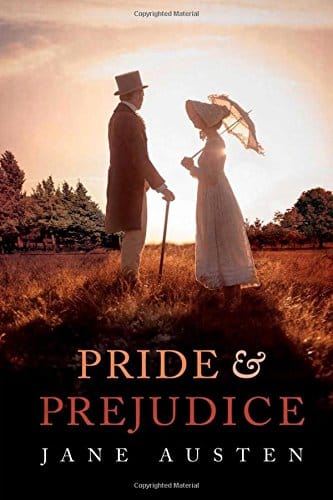Exploring Jane Austen’s Pride and Prejudice: Themes, Characters and Legacy
Discover the plot, characters, themes and enduring cultural impact of Jane Austen’s Pride and Prejudice in this concise yet comprehensive guide.

Introduction
Few novels have captivated readers for more than two centuries quite like Jane Austen’s "Pride and Prejudice." Published in 1813, the book blends romance, wit and keen social observation into a narrative that feels as fresh today as it did in the Regency era. Whether you are approaching the novel for the first time or revisiting it with seasoned eyes, understanding its context, characters and themes can enrich the experience and reveal why it remains a cornerstone of English literature.
Plot Overview
At its heart, "Pride and Prejudice" follows Elizabeth Bennet, the intelligent and spirited second daughter of a country gentleman with five unmarried daughters and no male heir. When the wealthy, reserved Mr. Darcy arrives in Hertfordshire with his amiable friend Mr. Bingley, local society buzzes with excitement. Misunderstandings ensue: Darcy’s initial aloofness offends Elizabeth, Bingley’s growing affection for her sister Jane is thwarted, and meddling relatives complicate matters. Through a series of witty encounters, errors of judgment and emotional revelations, Elizabeth and Darcy confront their titular flaws—her prejudice and his pride—ultimately achieving mutual respect and love.
Major Characters
Elizabeth Bennet stands out as one of literature’s most beloved heroines. Her quick intellect, moral clarity and refusal to conform to restrictive gender expectations make her relatable across generations. Mr. Fitzwilliam Darcy, initially perceived as proud and distant, gradually reveals integrity and depth, illustrating Austen’s talent for nuanced character development. Supporting figures—Jane Bennet’s gentle optimism, Mr. Bennet’s dry humor, Mrs. Bennet’s anxious matchmaking, the obsequious Mr. Collins, the conniving Mr. Wickham and the imposing Lady Catherine de Bourgh—serve as foils that illuminate the protagonists’ growth.
Key Themes
Austen explores several interwoven themes. Social class looms large, dictating acceptable behavior, marriage prospects and personal freedom. The conflict between individual desire and societal expectation surfaces repeatedly, most poignantly in Elizabeth’s determination to marry for love, not convenience. The novel also critiques first impressions—Darcy’s hauteur masks generosity, while Wickham’s charm hides deceit. Finally, Austen champions personal growth; characters who learn to look inward and shed prejudice are rewarded, while those who cling to vanity or greed face repercussions.
Social Satire
While often celebrated as a romance, "Pride and Prejudice" sparkles with satire. Austen lampoons the mercenary nature of marriage markets, embodied by Mrs. Bennet’s relentless quest to secure husbands for her daughters. She pokes fun at clergy through Mr. Collins’s sycophantic boasts and mocks the pretensions of the aristocracy via Lady Catherine’s imperious meddling. By wrapping social critique in humor, Austen invites readers to question entrenched norms without ever preaching.
Romance and Irony
The novel’s enduring charm lies in the chemistry between Elizabeth and Darcy, a dynamic propelled by Austen’s masterful use of irony. Their quick dialogue crackles with double meaning, revealing attractions neither character readily acknowledges. The famous proposal scene at Hunsford, where Darcy’s declaration is undercut by Elizabeth’s scathing rebuff, exemplifies this tension. Irony also underscores moral lessons: Darcy’s initial arrogance blinds him to social grace, just as Elizabeth’s prejudice blinds her to his virtues. Their eventual union celebrates humility and open-mindedness.
Language and Narrative Style
Austen’s prose is concise yet richly layered, balancing free indirect discourse with polite conversation. This narrative technique grants readers intimate access to characters’ thoughts while maintaining an objective, often humorous distance. Her subtle wordplay rewards careful reading: a single line of dialogue can reveal hierarchy, hidden affection or biting critique. Such stylistic finesse contributes to the novel’s rereadability, as new nuances emerge with each encounter.
Modern Relevance
Despite its 19th-century setting, "Pride and Prejudice" resonates with contemporary audiences. The struggle to reconcile personal values with societal expectations mirrors modern debates about career, marriage and identity. Elizabeth’s insistence on respect and emotional compatibility in relationships feels strikingly progressive. Moreover, Austen’s commentary on wealth inequality, gender roles and the power of reputation echoes in today’s social media-driven culture, underscoring the novel’s timeless insight into human behavior.
Adaptations and Cultural Impact
From the iconic 1995 BBC miniseries starring Jennifer Ehle and Colin Firth to Joe Wright’s lush 2005 film and the playful reimagining of "Bridget Jones’s Diary," adaptations continually introduce Austen’s story to new audiences. Literary spin-offs such as "Pride and Prejudice and Zombies" demonstrate the narrative’s flexibility, while countless translations testify to its global appeal. Each adaptation highlights different facets—romance, comedy, feminist subtext—affirming the novel’s multifaceted allure.
Reading Tips and Conclusion
First-time readers may wish to familiarize themselves with Regency customs—entailment laws, social visits, dance etiquette—to better appreciate plot nuances. Annotated editions or companion guides can clarify period-specific references without spoiling the story. For rereaders, focus on Austen’s structural craftsmanship: how small moments foreshadow revelations and how secondary characters amplify central themes. Ultimately, "Pride and Prejudice" endures because it celebrates growth, empathy and the transformative power of honest self-reflection—values as vital in the 21st century as they were in 1813.



